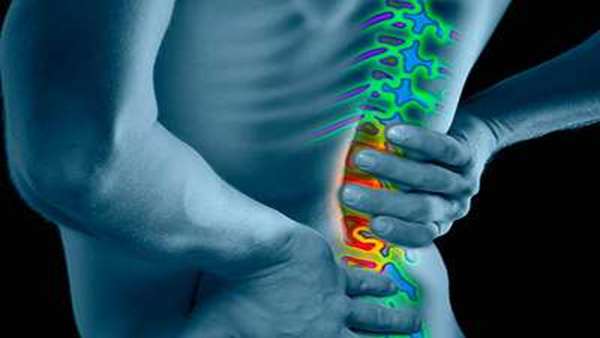Regenerative medicine technology targets cause of low back pain
In addition to its effects on quality of life, chronic low back pain exerts a significant socioeconomic burden, primarily through lost work days and treatment costs. As many of its sufferers try to manage the pain with prescription drugs, it also has contributed to the growing opioid crisis, which is now a national research priority.
In addition to its effects on quality of life, chronic low back pain exerts a significant socioeconomic burden, primarily through lost work days and treatment costs. As many of its sufferers try to manage the pain with prescription drugs, it also has contributed to the growing opioid crisis, which is now a national research priority.
Biomedical Engineering Professors Devina Purmessur and Natalia Higuita-Castro are leading an interdisciplinary team at The Ohio State University to address an underlying cause of the pain, intervertebral disc (IVD) degeneration. They recently earned a one-year, $368,000 National Institutes of Health (NIH) R61 award to investigate novel minimally invasive and non-addictive therapies for low back pain.
According to Purmessur, director of the Spinal Therapeutics Lab and faculty member of the Spine Research Institute, most current surgical and non-surgical treatments focus on alleviating the pain. "The problem with focusing on just the pain, is that it doesn"t fix the disease," she explained. "You"re just treating the symptoms."
Therefore the optimal therapy would target both structural restoration and pain reduction. For some time, Purmessur has questioned if diseased and deteriorating IVD cells could be coaxed to revert their phenotype—the cell"s observable characteristics—back to original function and health. An opportunity to explore further came last year when she learned about another Ohio State biomedical engineering team"s breakthrough—tissue nanotransfection (TNT)—that can convert skin cells into blood vessels and nerve cells.
"It started with a conversation with Natalia and Daniel (Gallego-Perez) about their work," she said. "If they can take a cell and differentiate it into a completely different cell type, can we take a diseased cell and reverse it back to its healthy state through tissue engineering?"
Higuita-Castro believes they can. Their proposal employs a multi-disciplinary approach to determine the effects of non-viral delivery of developmental proteins, specifically transcription factors, to reprogram diseased IVD cells. It could potentially revolutionize spine surgery by providing clinicians with the ability to deliver a minimally invasive and non-addictive treatment of the underlying disease mechanisms in the operating room. The inventors are exploring ways to utilize similar approaches for other diseases in addition to lower back pain.
"Our delivery system is unique," Higuita-Castro said. "We are using extracellular vesicles we have engineered as nanocarriers to carry a cocktail of reprogramming factors directly to the diseased cells." Extracellular vesicles contain various biomolecules including DNAs, RNAs, proteins, and metabolites, and play a pivotal role in cell-to-cell communication.
Their cell reprogramming concept has been proven in the lab, which the team published in the July 9, 2019 issue of the Journal of Orthopaedic Research. Graduate Research Assistant Shirley Nina Tang was the lead author and performed the experimental work overseen by Purmessur and Higuita-Castro. The NIH-funded project will serve to further validate the technology and quantify the effects of non-viral delivery of transcription factors. The team first will use engineered vesicles in controlled lab experiments with human patient-derived cells, and subsequently in rodent back pain models evaluating the animals" spinal function and pain behavior.
Since the intervertebral disc does not have a blood supply, traditional cell-based regenerative medicine techniques such as stem cell injection have encountered roadblocks in the spine. Purmessur explained that their approach is not introducing any other cell type into the body or removing cells to treat and reintroduce later.
"Whether during a back surgery or through minimally invasive techniques, the factors can be delivered to the cells where they are, giving them a kickstart to help the cells make healthy proteins and rebuild their extracellular matrix," she said.
According to Higuita-Castro, another major advantage over other biological delivery systems, like viruses, is that the extracellular vesicles are naturally-derived, which minimizes inflammatory immune system response.
Based on the results of their in vitro and in vivo work, the research team plans to apply for additional federal funding to validate the treatment in a large animal model with chronic degenerative spine conditions. College of Veterinary Medicine Associate Professor Sarah Moore has signed on as a project collaborator. While a trial in a large animal model is a necessary step toward beginning human patient clinical trials, there also is significant potential benefit in reducing pain and suffering of companion animals currently seen in veterinary clinics.
Co-investigators on this grant include Ohio State spine surgeon Safdar Khan, Biomedical Engineering Assistant Professors Daniel Gallego-Perez and Benjamin Walter, and Biostatistics Research Assistant Professor Xiaokui Mo. Also working on the project are Tang, who oversees lab and animal models, and fellow biomedical graduate student Ana Salazar-Puerta, who generates the engineered vesicles.
Reference:https://onlinelibrary.wiley.com/doi/abs/10.1002/jor.24408





ارسال به دوستان